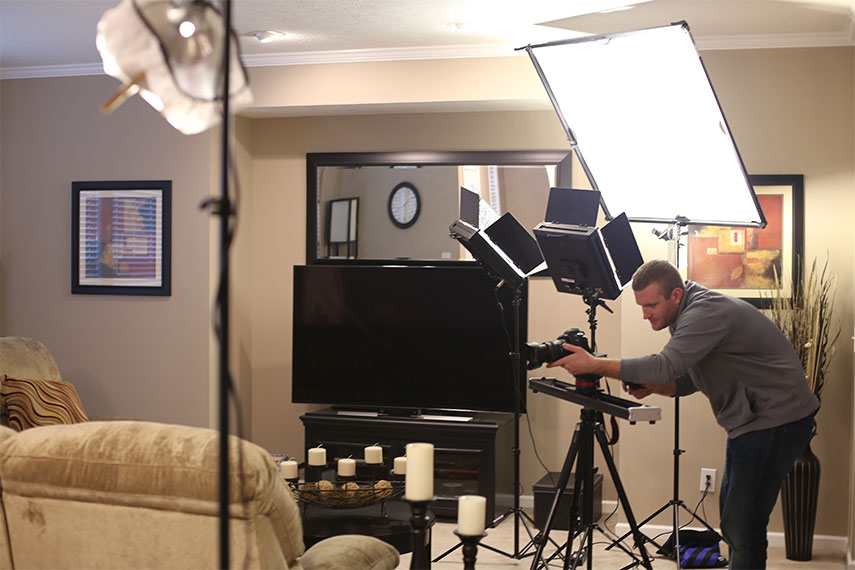As a video producer here at TechSmith, I regularly conduct interviews for both internal and external communications. I’ve found over the years that the success of a video interview comes down to two main things: being prepared and making your subject feel comfortable.
Shooting an interview can be challenging. With usually only one chance to get it right, it’s vital to take all of the proper precautions and plan ahead (hint: we’ll be covering those precautions in this blog post). Additionally, you want to make sure the subject feels comfortable because capturing genuine responses is arguably the most important part of shooting a great interview.
To help you successfully shoot a video interview, I’ve gathered some of my personal, tried-and-true tips.
#1: Decide on Location & Time
You’ve found your subject. Now, you’ll want to find a good place to shoot the interview, and schedule a time that works for both of you. As you work with your subject to decide when and where to conduct the interview, it’s important to be as accommodating as you can. A great way to make scheduling a smooth process is to offer them a few different time slots and let them choose one. In addition, make sure you give yourself enough time to set up and change course if problems arise. When selecting a location here are some things to consider:
Are there windows? It’s best to avoid natural light if possible because sunlight is variable. You can’t control the weather, but you can control your own lighting.
What noises do you hear? Buzzing from lights? Cars driving by? You’ll want to avoid locations with lots of background noise.
Are there enough power sources? If not, make sure to bring equipment (such as extension cords) to counter this.
#2: Consider What Equipment You’ll Need
To make sure you’re prepared on the day of the interview, think through what equipment you’ll need to shoot the interview. That means asking yourself questions like:
- Do I plan on using one camera or two?
- How many lights should I bring?
- What mic should I use?
I have found that creating a checklist works best. Being prepared will make you more comfortable during the shoot, which will help keep your subject calm.
#3: Prepare Interview Questions
To get the most complete responses, I recommend thinking of questions that won’t generate a simple “yes” or “no” response. Also, be aware that it’s not uncommon for interviewees to ask to see the questions ahead of time in order to prepare. I try to avoid this if possible because you don’t always get a genuine response. However, in some cases, you may need to provide the questions in order to conduct the interview, and that’s okay.
Keep in mind that it may take a little while for your interviewee to feel comfortable, so it’s a good idea to start off with easier questions and then ease into tougher ones. Ideally, you’ll want to cut out your voice when editing so you’re left with only their answer. That’s why open ended questions usually work best. Plus, they elicit reflection and thought from your subject.
And, don’t forget to ask follow-up questions as well! Sometimes the best responses I have gotten have been from when I follow up a response with a “why” or “could you explain that a little more please?”
#4: Get the Right Shot
With interviews, it’s common to end up editing a lot of content out since you typically only need the answers that illustrate the subject’s point the best. So when you choose your framing, make sure you can easily cut between shots. For my interviews, I like to frame a medium shot recording in 1920x1080p. When editing, however, I create my canvas in 1280x720p. That way, I am able to cut between the medium shot into a close up without losing quality. In addition, two camera setups are great because if one camera fails or maybe it gets bumped accidentally, you can cut to that other camera while editing. And if you record in this manner, it’s easy to edit various shots of your interview into a powerful video interview with Camtasia.
Once you’re done recording, make sure to thank your interviewee for their time. It’s also a good idea to show the edited version of the video interview with the person before you publish it live to make sure they are comfortable with the content.
And remember, pre-production is the most important of an interview! If you take the time to prepare before recording, you’ll be well on your way to shooting an interview you can be proud of!





